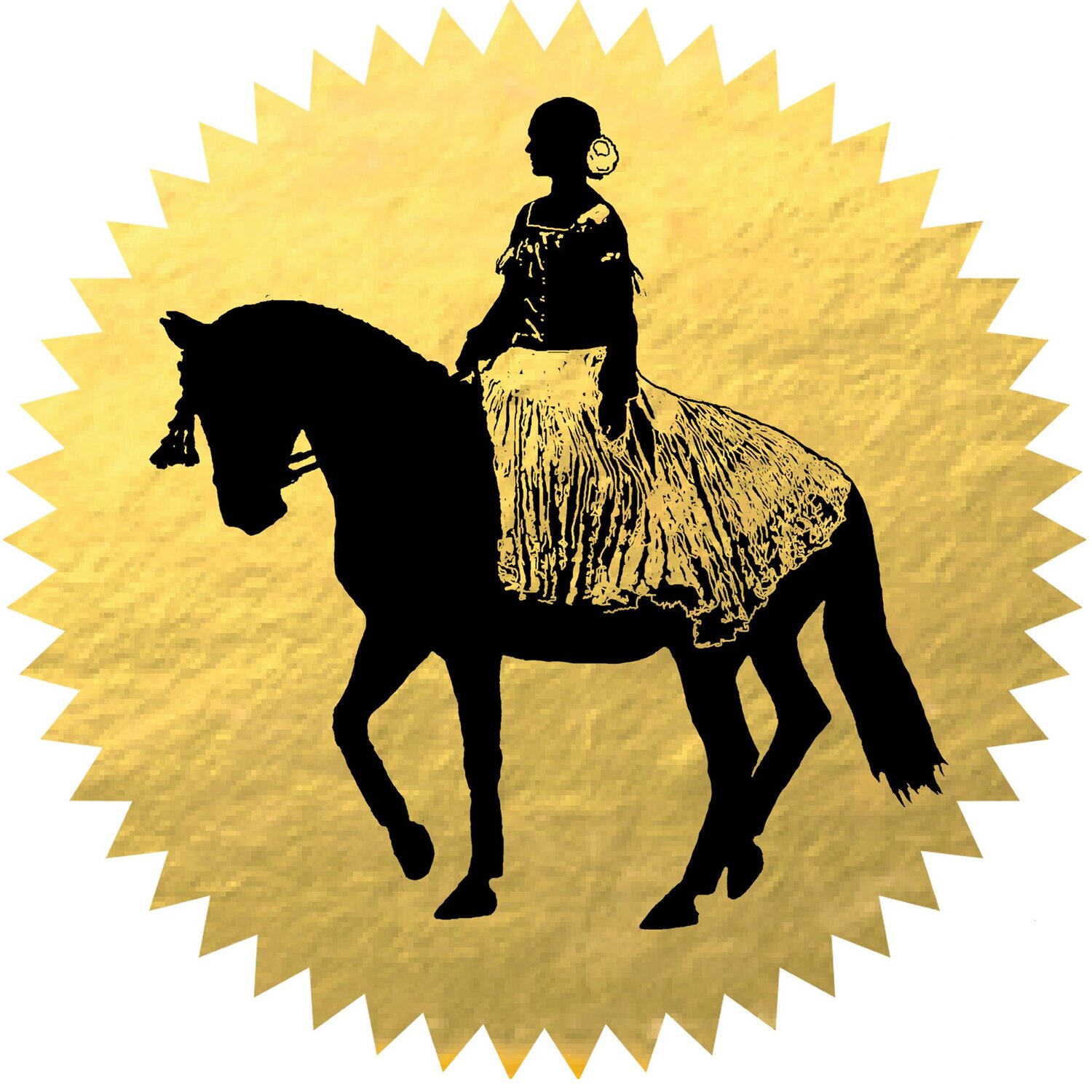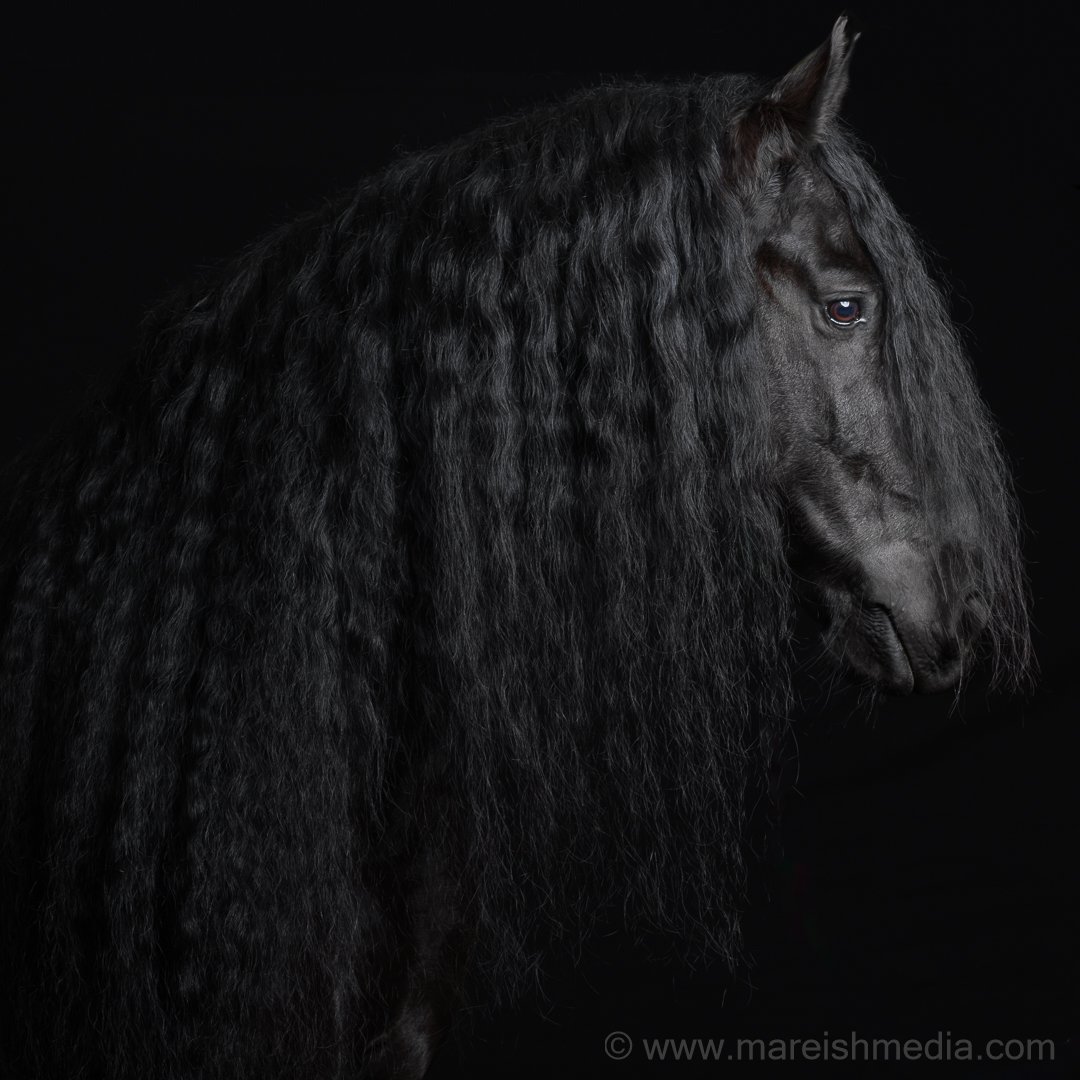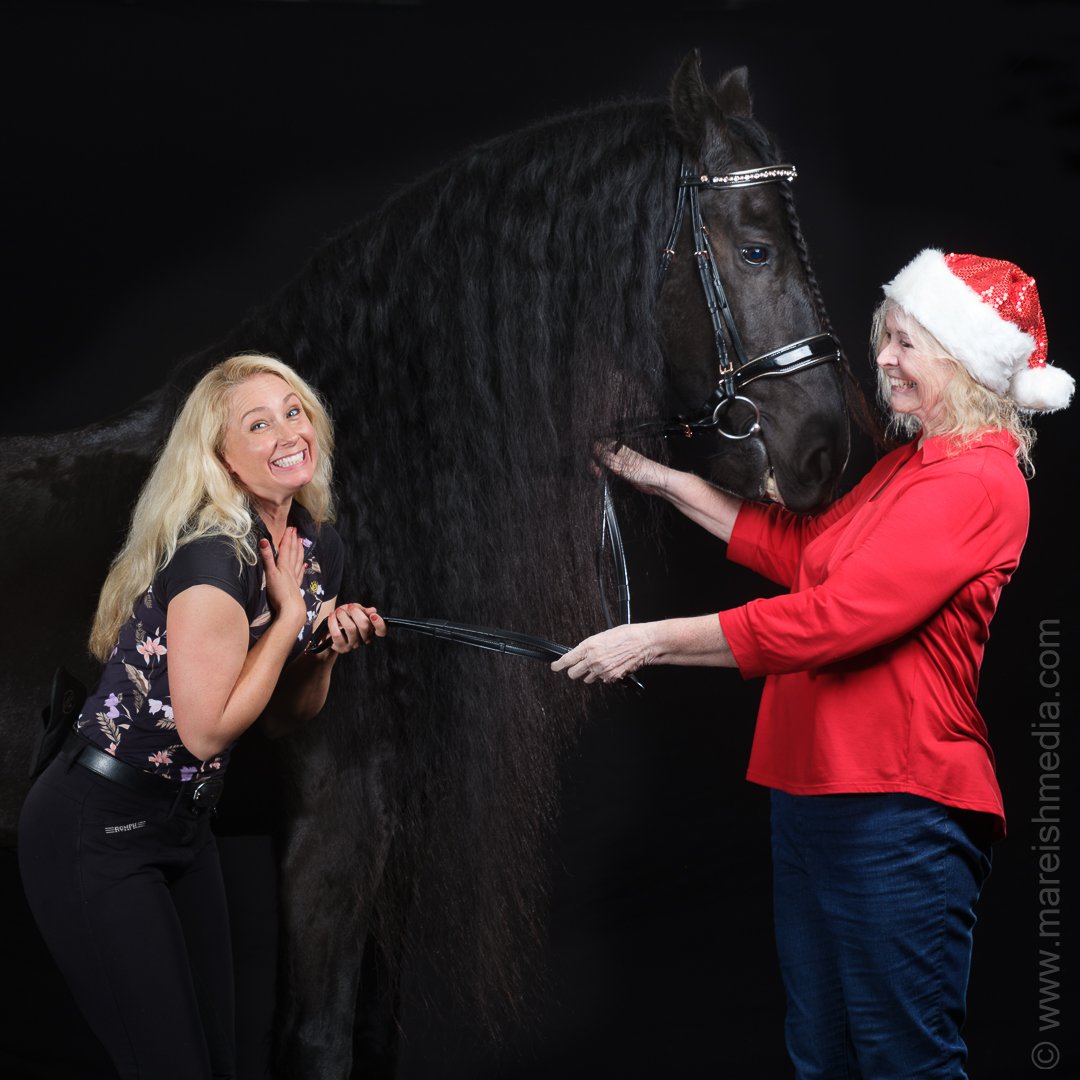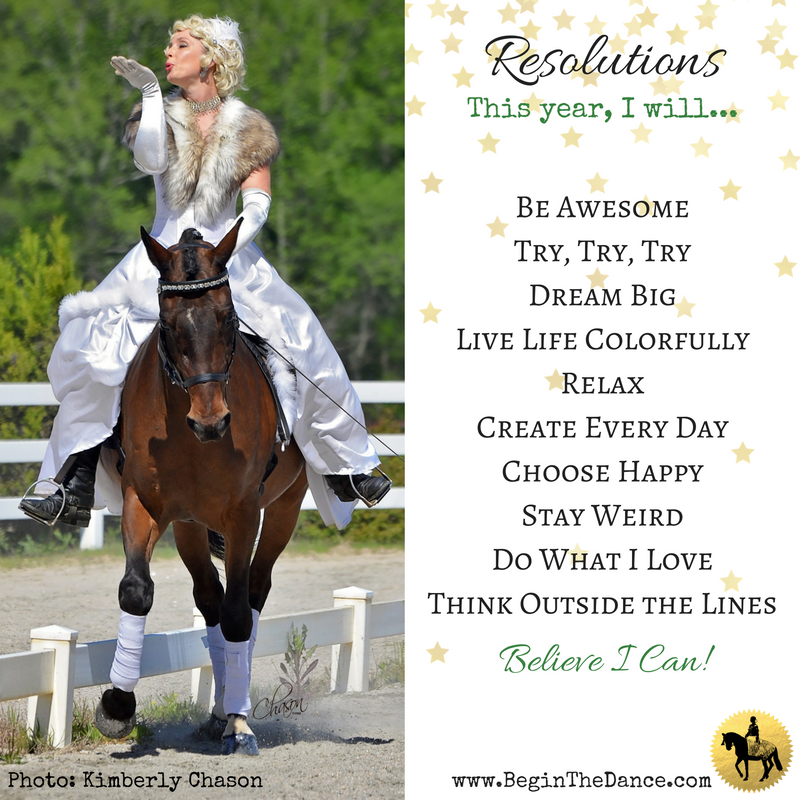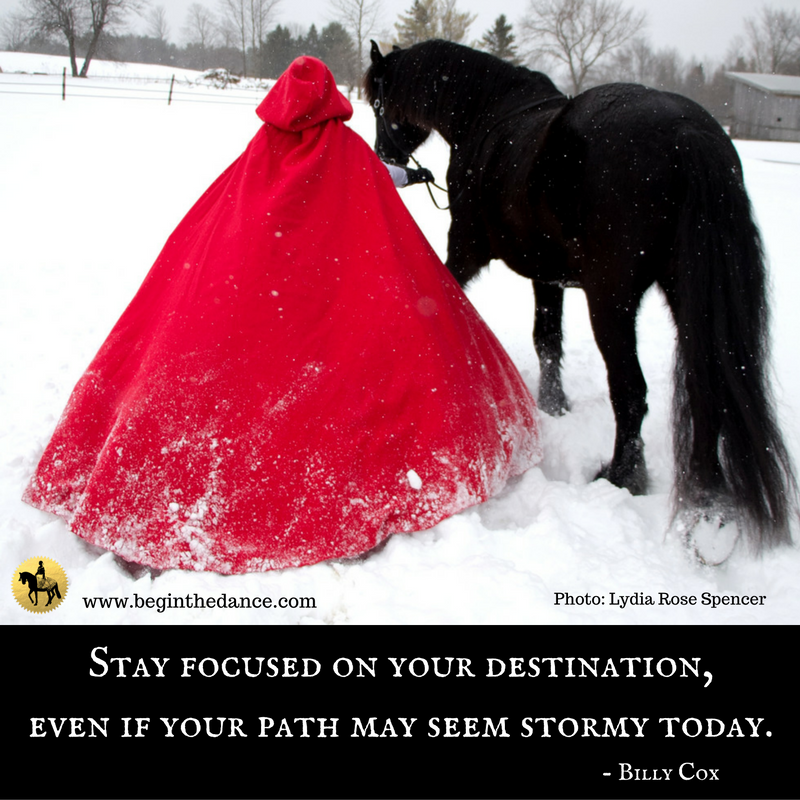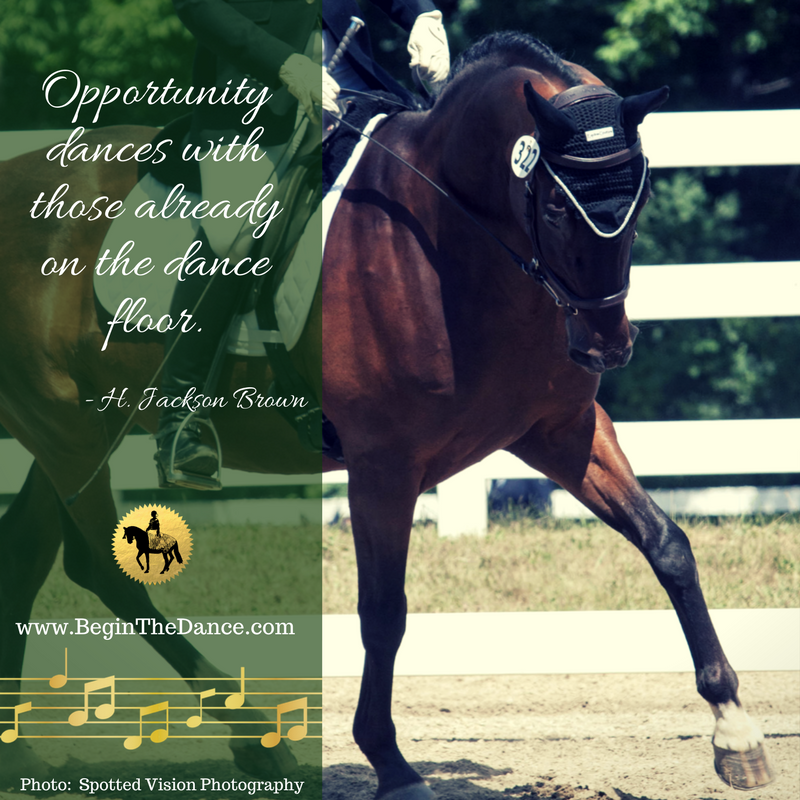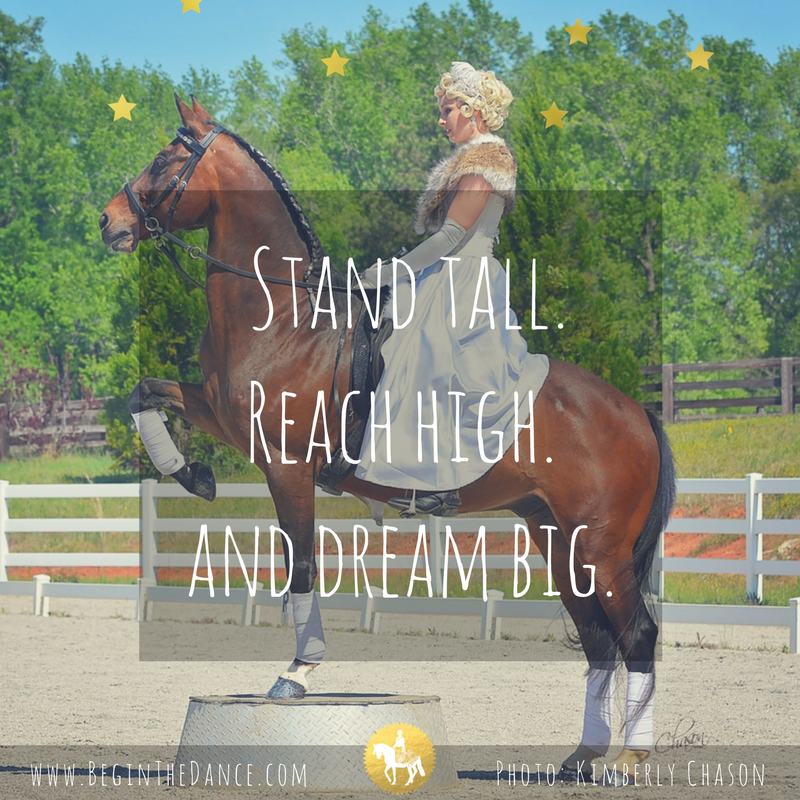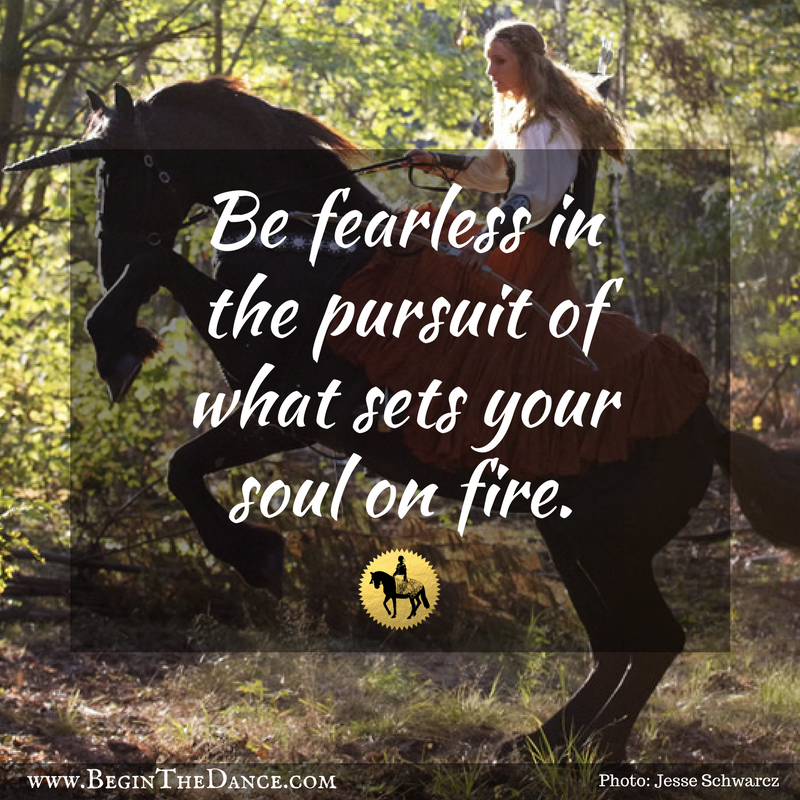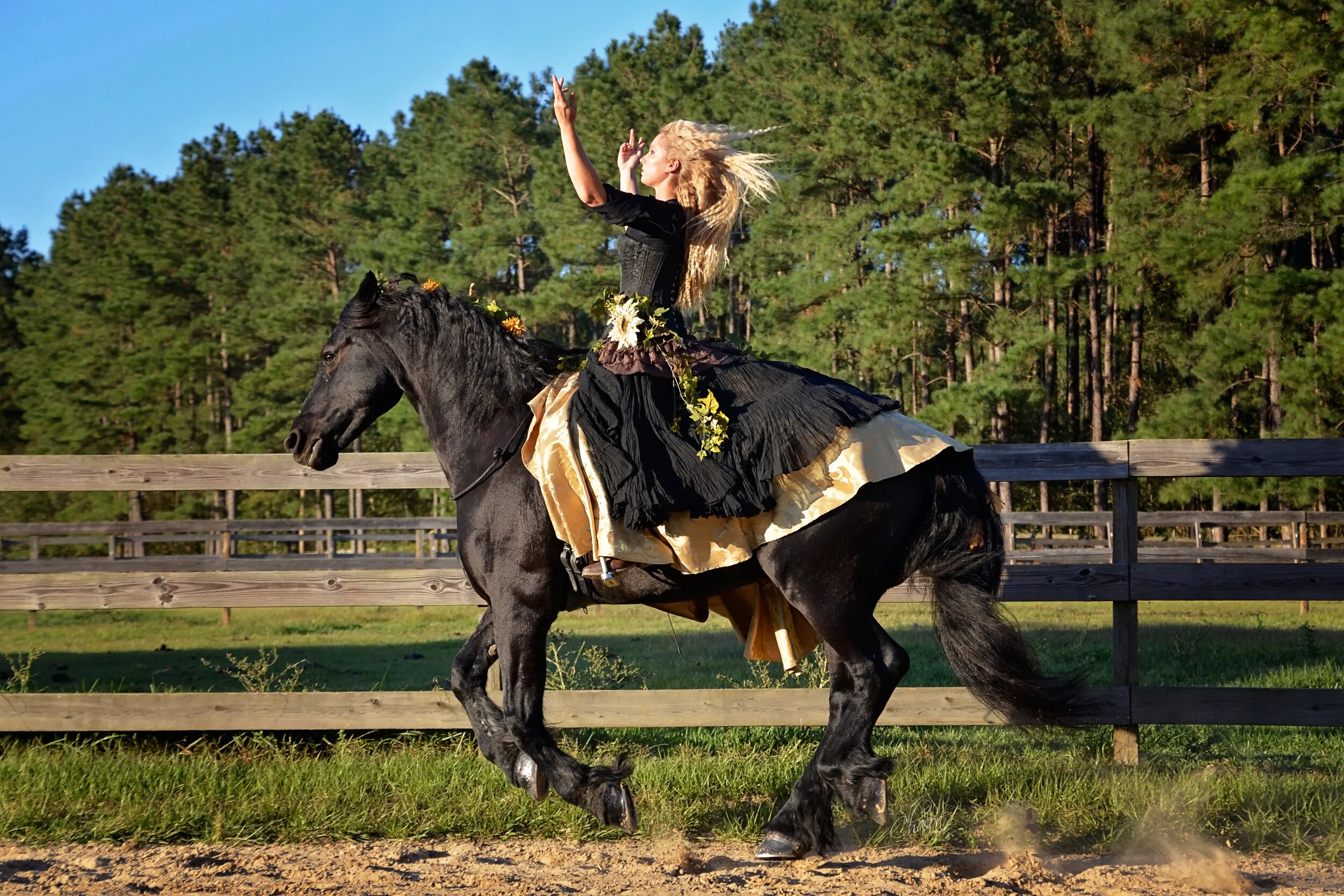I have dealt with show anxiety for many years and still feel the butterflies before each performance. I had MANY goals growing up, I wanted to be an Olympic rider and an Olympic judge! I put a LOT of pressure on myself and had high expectations. I was always riding for scores and focused on that particular percentage whether is was a 60% for a USDF Medal or a 65% for the USEF "r" Judges Program. That pressure caused me to CHOKE and FREEZE UP. I got very tight, held my breath, and was not in the moment with my horse. This caused my horses to be tense, resistant, and lose all the connection that I had schooling at home. After earning my scores for my USDF Silver Medal and the USEF "r" Judges Program I was burnt out.
When I bought Douwe in 2008 I decided to follow my heart and to focus on my horse, not myself. I went to shows that I thought would be fun and easy for him and showed below the level we were schooling. Douwe was undefeated at Training Level and earned many awards through the Northeast Friesian Horse Club. This experience helped boost my confidence and give me hope. With Douwe my aspirations are more artistic in nature, performing and training him in liberty and bridleless. I have found that performing is more natural to me than showing because I can make mistakes and the audience won't really know, as opposed to a judge that looks for every fault. Performing, to me, is based on the positive and showing is based on the negative.
Here are 10 strategies I have used to lessen my show and performance anxiety. I hope they will help you this show season!
1. Get Organized!
The stress of showing and performing really comes down to detailed preparation and last minute details. Usually, we are so wrapped up in our own lives that we forget to think ahead to all the things we could take care of ahead of time to make the showing experience go as smoothly as possible. I have multiple checklists that I use...one for early preparation (months in advance, hotels, trailer details-check tires, etc) the week before (packing, cleaning tack, preparing my music, etc), the night before (schooling at the venue, grooming, etc), and the day of. Planning out your day with a priority list is very helpful so you can stay on track.
2. Focus!
It helps me to focus on ONE thing at a time when I am getting ready. Instead of letting your mind wander ahead to your test/routine and thinking of everything that could go wrong, try your best to focus on what is right in front of you. Braiding your horse, cleaning your tack, bathing, tacking up, etc. When something pops into your head that you may have forgotten just WRITE IT DOWN so you can get back to the job at hand. I used to keep a piece of paper and a pen in my pocket but now I use the notes app on my IPhone. I even included simple things like breakfast and hair/makeup which helped me plan my show day so I gave myself plenty of prep time in the morning.
3. Change Perspective:
Take a moment to visualize the show/performance experience from your horse's perspective. What do you think your horse will get upset, tense, or excited about? If you know the trailer ride will be full of stress you will want to put extra attention towards the morning preparation so your horse will not be waiting on the trailer while you finish packing. Think about the stall situation, are the stalls open to the other horses? Will you need a stall guard (or two!). If you have never been to the showgrounds make sure to email or call ahead to see what the stalls are like. You may arrive and find out that there are no eye hooks to put up your stall guard or that your horse will be stabled where he cannot see other horses. Do you have certain care routines that you do with your horse like carrot stretches or hand grazing? Try to fit those into your show day to help keep your horse relaxed. Make sure to pack your therapeutic products, Back on Track, ice boots, and liniment. I use Rescue Remedy (a Bach homeopathic remedy) to help minimize my stress and the horse (yes it works for both people and horses!). I also pack Arnica pills to help with muscle soreness from stress and physical exertion.
4. Familiarize:
Most dressage shows will allow riders to hand walk or school in the show arena the day before but will block it off after they prepare and drag it at night. If there is an opportunity even just to lead your horse around the outside of the ring it will really help, especially with a spooky horse. Arrive early and take your time letting your horse look around and see the judge's booth, the flowers, and the gait to enter the ring. This will give you an indication as to how your horse might react the next day. If the showgrounds has a long walk between the stabling, the warm-up ring, and the show ring you will want to time yourself the day before so you can time your preparation just right.
5. Calming & Relaxing Exercises:
Deep breathing, yoga stretches, and simple loosening exercises during warm-up are very helpful. Play some calm music on your phone or listen to it while you are tacking up. Anything that helps slow down your mind and your heartbeat is helpful. I find that simple yoga stretches and warm-up exercises work best for me. If I sit still and try to focus on my breathing my mind gets racing. I used to try visualizing my dressage test in the morning but found that I became tense and anxious just thinking about it. Experiment with different techniques to find what works the best for you. I also give myself a solid 10 minutes to just get on my horse and walk, letting his movement loosen my hips and slowing down my breathing.
6. Focus on the Judge/Audience:
When you are performing the audience has no idea what you are planning to do. Use that to your advantage and when things go wrong just smile and pretend that was supposed to happen. Of course there are things the audience will know isn't mean to happen, like spooking, bucking, or resistance. However, the audience will usually sympathize with you as long as you don't get upset, use force, or make it look like you are having a hard time. That will make the audience tense and want to look away. During a competition the same advice doesn't apply but try to think of ways to make the judge's job easier and more enjoyable. Make a great first impression with good grooming and turnout, tell the judge "Good Morning!" or tell them your name and number to help the scribe check the test. Say something so the judge can hear your voice (be confident and cheerful) and feel your positive energy! The judge would love to see you perform your best so if something goes wrong it does not help to dwell on it. Think ahead to the next movement and forget about the moves that already happened. Instead of thinking that the judge is mean-spirited, imagine that she is your personal cheerleader, silently willing you to do your best. That is what I do when I am judging!
7. Smile!
Just the simple act of smiling can change the chemicals in your brain. Even if you have to force it!! Just do it! Especially going down that centerline. Being a dressage judge I know the difference in how I judge a rider that looks highly stressed and one that looks like they are enjoying themselves. A smile puts the judge at ease and lets them focus on the other aspects of your ride. If your face is scrunched up or you look like you are about to cry it will only distract the judge, making them feel tense and negative and that could affect your scores. One cute thing my Mom used to do for me was put a smiley face sticker on the top of my horse's bridle, on the poll. I could see the smiley face when I looked at my horse's head and it reminded me to smile! Thanks Mom!
8. Expect Mistakes:
Please accept that your dressage test or performance routine will not be perfect. Perfect is not real. Obsessing over every little detail not being just right will take you out of the moment and the true enjoyment will be lost. Staying focused on your horse will help you move on from a mistake and enjoy the rest of your routine. Remember that EVERYONE makes many, many mistakes in every ride. I am sure every Olympic rider can recall an embarrassing experience where their horse left the dressage ring or bucked them off in front of an audience. S**t happens!!! That's life, what more can I say?
9. Healthy Diet:
This is very difficult to stick with at a horse show. I can relate! Every best intention usually goes down the drain on the second day. That cooler you packed with healthy food is now luke warm or completely gone! I have found that healthy snack bars (Kind Bars are my favorite!) and flavored seltzer waters (because it is more fun than plain water!) are the easiest things for me to stock up on before a show. When you start to feel shaky it could be low blood sugar. Watch out for heat exhaustion at shows as well, it is so easy to get over focused on your dressage test and forget to drink any water. Put on that show coat on a 90 degree day and I can guarantee you will have problems focusing in your dressage test! Avoid sugar and caffeine the best you can, particularly right before your ride. The caffeine will get your heart racing and the sugar will not sustain your energy.
10. Practice In Your Show Clothes/Costume:
This is a common mistake that I have fallen for many times, especially showing. For instance, I would save my fancy dressage boots for a show but they felt slippery when I rode because I was used to suede half chaps. Or my white show breeches were not full seat and I felt like I was sliding around in my saddle without my sheepskin seat cover. The same is true for your horse's tack, make sure you have ridden in your saddle pad at least once to be sure it fits well and won't slide back and make sure to ride in your show bridle the week before so your horse has a chance to adjust. All of these little details make a difference. You need to feel confident in your show clothes/costume to perform at your best!
Here is a helpful video on a common performance anxiety trait called Choking. He includes two additional strategies, "De-escalate the Situation" and how to use a "Holistic Cue Word".
